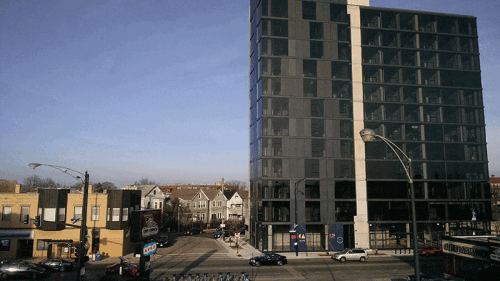News
Two of the current ULI Rose Center fellows, Mayor Muriel Bowser of Washington, D.C., and Mayor Sam Liccardo of San Jose, California, gave brief interviews on what their cities are doing for the tech sector. housing affordability, and infrastructure. Liccardo said, “We are starting to recognize that the suburban tilt-up campus of a generation ago are not what young creative people want to work in today and we need to think more and more about how we’d retrofit a city that was really largely built for cars into a city that’s built for people.”
Overall real estate investment trust acquisitions dwindled throughout 2016 while dispositions surged. Acquisitions for equity REITs were down 35 percent year over year, totaling $63.6 billion in 2016. The fourth-quarter volume was the lowest quarterly total since the second quarter of 2010, at just $7.9 billion. Plus, interest rate survey data from Trepp.
The U.S. hotel market has experienced significant growth over the past five years, but it is looking at a substantial slowdown as a result of the increase in the supply of rooms. The growth in supply has been picking up speed as operating fundamentals have consistently improved, but it’s no surprise that fundamentals would be soon pressured. Plus, interest rate survey data from Trepp.
Commercial real estate lending volume finished the year on a strong note as loan closings surged in November and December, according to the latest research from CBRE. Despite concerns throughout the year regarding the direction of the global economy, U.S. capital markets remained favorable to borrowers in the fourth quarter (Q4) of 2016 due to low relative rates and abundant capital.
Last year, $502 billion in U.S. commercial mortgages was originated. That was down slightly from the $504 billion originated the year prior and well shy of the $537 billion that the Mortgage Bankers Association (MBA) had predicted. The MBA is forecasting $515 billion of lending activity for 2017, which would top the origination record of $508 billion set in 2007. Plus, interest rate survey data from Trepp.
The holiday season and beginning of the new year brought some bright spots, but also some cause for concern in the retail sector, which, in turn, affects commercial real estate. For example, some household names announced store closures in recent months, while other sectors of the retail world have survived, thrived, and even expanded.
According to NAREIT, regional mall REITs posted total yearly returns of –5.2 percent last year. However, the broader retail REIT sector brought in a 0.95 percent total return for 2016, and 0.5 percent for 2017 year-to-date. Within the sector, freestanding retail REITs significantly outperformed mall REITs and shopping centers last year overall. Plus, interest rate survey data from Trepp.
The significant, lasting impact that driverless technology will have on land use and urban development was the topic of a thought-provoking discussion at ULI’s recent Midwinter Meeting, held at ULI headquarters in Washington, D.C., and attended by the Institute’s global trustees.
At a recent ULI Chicago event, speakers addressed the disruptive technologies that are having an impact on today’s lifestyles and shaping our vision of the future city. What is a reasonable projection of the near future in real estate, and which investments will enable the industry to profit and cities to prosper? Panelists asked whether current trends are pointing us toward a leisure city, a green city, a dystopia, or something in between.
A new study of TOD and parking, Empty Spaces, which focused on five case studies and was released by Smart Growth America in partnership with the University of Utah’s College of Architecture and Planning, found that even some of the top TOD projects in the United States had built too much parking.




